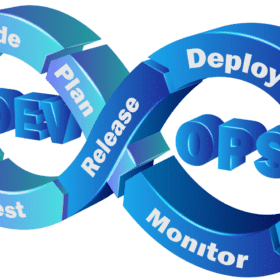What You Need to Know about 5G Network Slicing versus Private Networks
It’s here. After the hype, commercial and enterprise 5G adoption is finally becoming a reality. According to data published by the Global mobile Suppliers Association (GSA), the number of companies investing in private LTE or 5G mobile networks increased by 20% between 2020 and 2021 – a figure that will only continue to increase as more use-cases are realized. What’s more interesting, however, is that of those companies polled, nearly half (44%) have already deployed 5G for a private mobile network or plan to do so in the near future.
What this data amounts to is an unquestionable upward trend in 5G deployments for private mobile networks. But as the saying goes, all roads lead to Rome, and the number of avenues open to companies when it comes to delivering an outstanding quality of service for users and subscribers is multiplying fast. QoS is a key benefit of 5G, and selling fast and reliable connectivity to market segments will be where the dollars are. Enea has been working in private 5G with its 5 g data microcore suite and while private networks do a fine job, with network slicing now gathering steam as a viable and scalable alternative, there’s more to consider. Much more.
What is the difference between private networks and network slicing?
Private networks and network slicing are two very different journeys, but the destination remains the same – offering users and subscribers the best possible quality of service while balancing efficiency with security. It’s less a technology decision, and more an organizational one. The toolset and operational capabilities needed to deliver slicing have to be understood and trusted by the telecom teams implementing this on the network.
A private network is self-contained and has its own spectrum, considered by most organizations to be more secure as it offers full ownership over things like security protocols, customization and access. A network slice, however, is taken from a provider’s public 5G network. This typically results in a much lower cost of ownership and is faster and easier to scale. This “slicing” of 5G networks for cloud services has generated interest (for flexibility and agility) and apprehension (for practical implementation) in equal measure, but all evidence points to network slicing as being a perfectly viable way for businesses to tap into the power of 5G – particularly those that want to upscale and downscale at their own pace. It should be noted that this is also driven from the phone/device perspective, with new Android devices supporting slicing at the OS level.
The benefits and drawbacks of private networks
Private networks are good solutions for delivering on quality of service as they are dedicated. What’s more, they are tried and tested in the field with multiple deployments already up and running. However, depending on what a business wants to achieve, private networks can be difficult to scale up (in capacity and distribution). Managing one or two private networks is fine – but what happens when dozens or even hundreds of networks are needed? This is when the private network approach becomes cumbersome and the focus turns to their cost-effectiveness and capability from a business perspective. Even with private networks, mission-critical use cases demand telco-grade equipment and services – and that can be a big investment for even the most established companies.
The siloed nature of private networks can make them more appealing for companies with concerns around security and bandwidth, particularly those worried about “competing” for space on a public network – after all it is a shared space. The counterpoint is that Telecom operators are used to providing capacity at point of need and scaling up networks to meet demand peaks – so providing slices of network data capacity is an evolution of service.
The rise of network slicing as a means to capitalize on 5G
Despite the trepidation around network slicing and its as-yet unproven capabilities in the field for mission-critical use-cases, it carries some key advantages. Network slicing essentially applies virtualization principles to mobile networks, allowing communication service providers (CSPs) to create network segments, separating users, devices or use-cases that require a particularly high quality of service. Network slicing delivers on the key benefits of private networks, but does so in a way that allows businesses to scale up or scale back seamlessly and be far more flexible in their approach to network management and deployment. The underlying infrastructure remains the same, but telecommunications operators can create more tailored and streamlined experiences for their users.
5G-connected ambulances are a great example of how network slicing can work to great effect. A “smart ambulance” will be able to relay data about a patient from the field back to the hospital far more effectively and securely if the hospital – or emergency services more generally – have their own “slice” of a 5G network.
The true pros and cons of network slicing, and how they compare to private networks, are difficult to determine at the moment, but as development continues the scalable software solutions that Enea provides (e.g. Enea Subscription Manager) continue to make 5G slicing more accessible – the true potential of network slicing will become an operational reality. From the device side we know new families of devices will support slicing from OS level and this will also create demand in the market; communication service providers that want to sit in the driver’s seat of 5G should already be considering how to monetize this.





